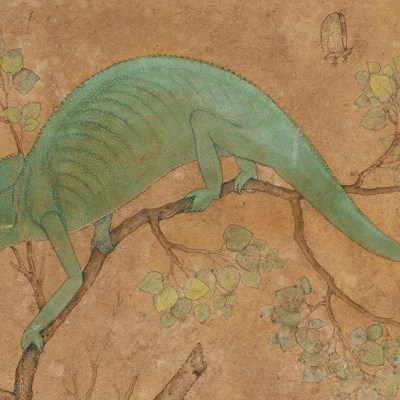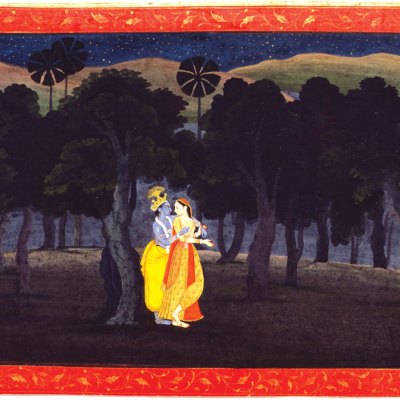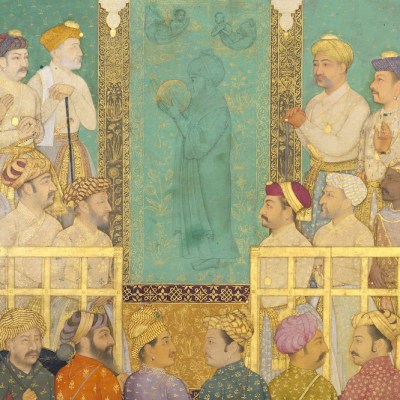
 ‘Four things to see’ is sponsored by Bloomberg Connects, the free arts and culture app. Bloomberg Connects lets you access museums, galleries and cultural spaces around the world on demand. Download the app here to access digital guides and explore a variety of content.
‘Four things to see’ is sponsored by Bloomberg Connects, the free arts and culture app. Bloomberg Connects lets you access museums, galleries and cultural spaces around the world on demand. Download the app here to access digital guides and explore a variety of content.
Each week we bring you four of the most interesting objects from the world’s museums, galleries and art institutions, hand-picked to mark significant moments in the calendar.
The exuberant annual festival of Holi sees revellers douse each other with coloured water and powders. There is also much feasting on delicacies, lighting of bonfires, playing of folk music and time spent with friends and family. It has come to be a beautifully messy celebration of spring, love and renewal.
Holi has its roots in Hindu mythology. The story goes that in ancient India, Holika, sister of the megalomaniacal king Hiranyakashipu, attempted to burn Hiranyakashipu’s son Prahlad alive at the king’s request, but Prahlad’s devotion to God kept him alive, and Holika perished in flames instead. In light of this tale, Holi has come to symbolise the triumph of good over evil. Its spirited festivities have inspired many artists, from traditional Indian miniature painters to more contemporary figures. This week, we look at four works that depict or relate to Holi.
Lord Krishna Playing Holi (Deccan artist, 19th century). Salar Jung Museum, Hyderabad
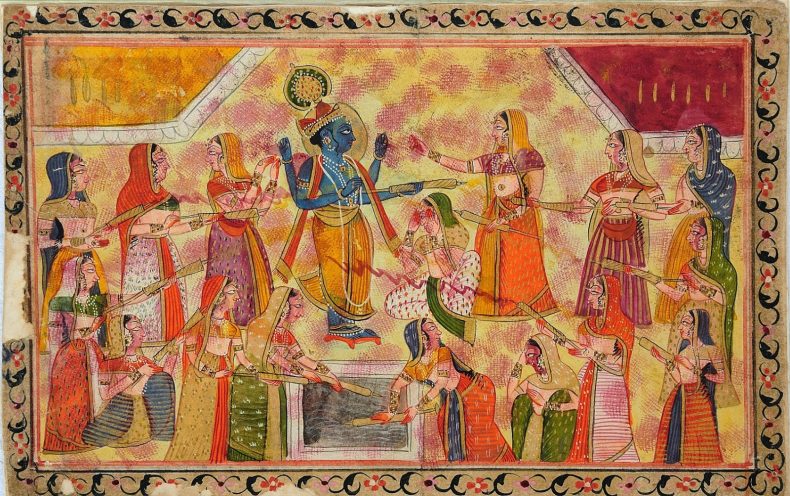
Lord Krishna Playing Holi (Deccan, 19th century)
Salar Jung Museum, Hyderabad
Dabs of red and yellow fill this lively miniature painting from the Deccan region in southern India, conveying the flung coloured powders of Holi. At its heart, Lord Krishna and Radha joyfully join the action, surrounded by jubilant gopis – female cowherds and devotees of Krishna. Some stand ready and eager with their pichkaris (a kind of water pistol) spraying coloured water in zigzags, while others refill theirs from the pool at the bottom of the scene. Click here to read more.
A Holi Festival (Mughal court artist, 19th century). National Museum of Asian Art, Smithsonian Institution, Washington, D.C.
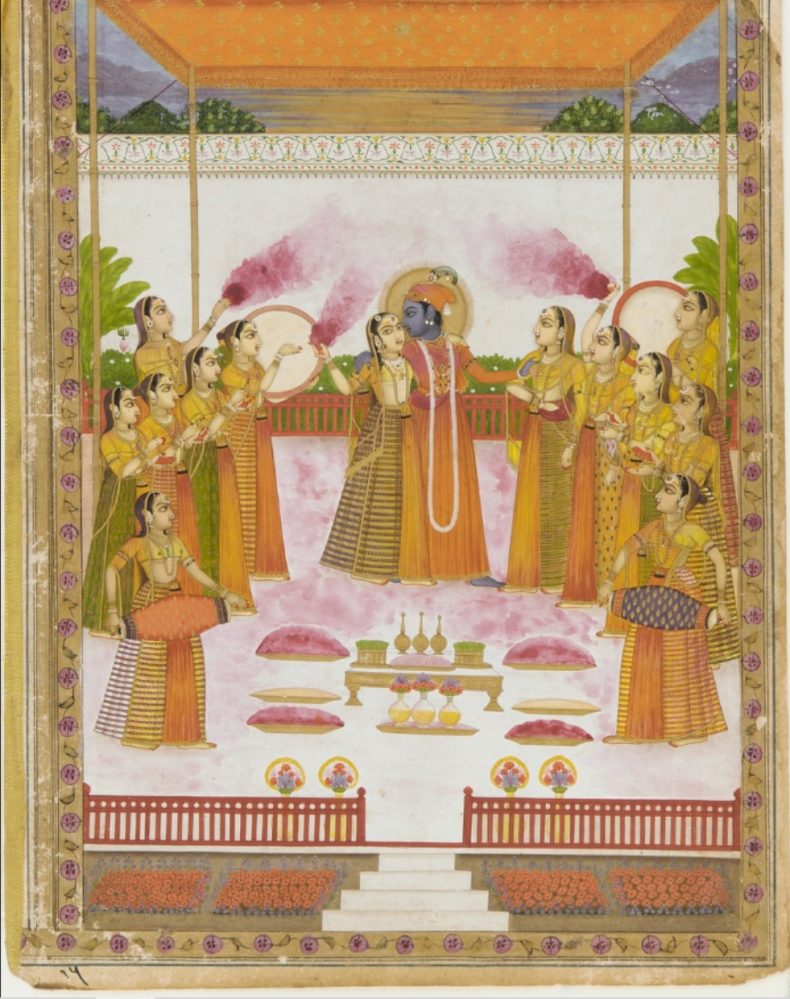
A Holi Festival (Mughal school, Lucknow, 19th century)
National Museum of Asian Art, Washington, D.C.
Plumes of red gulal, or powder, emanate from the hands of Radha and various gopis in this scene from Avadh, in the northeastern province of Uttar Pradesh. Taking place in a beautiful walled garden, the Holi celebrations continue with a feast of delicacies laid out in the foreground, flanked by two musicians playing two-headed hand drums. Click here for more.
Holi (c. 1930), Jamini Roy. Museum of Art and Photography (MAP), Bengaluru
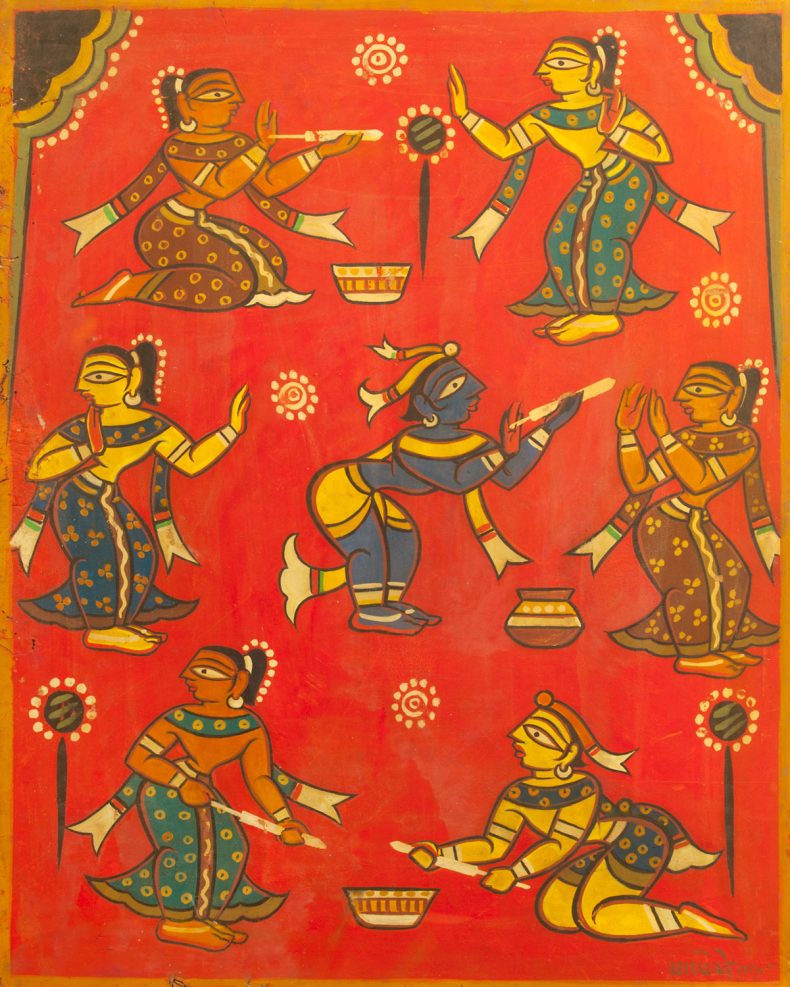
Holi (c. 1930), Jamini Roy
Museum of Art and Photography (MAP), Bengaluru
The bold curves, vibrant colours and almond-eyed figures in this Holi scene are typical of Jamini Roy’s celebrated style. Roy dabbled in Western portraiture and Impressionism in the 1920s but soon returned to the folk styles of his native Bengal, particularly embracing the strong outlines and minimal background detail of Kalighat painting. Click here to find out more.
A bronze pichkari or water sprinkler (India, 19th century). Horniman Museum and Gardens, London

Bronze pichkari (India, 19th century)
Horniman Museum and Gardens, London
Adorned with stylised floral and geometrical designs, this Indian pichkari would have been used for squirting coloured water during the Holi festival. Measuring just over 40cm in length, at one end is an iron plunger with an ornate rounded handle and at the other is the spout in the form of a bronze elephant’s head with protruding trunk and a hole in its mouth for the coloured water. Though the work is not currently on display at the Horniman, you can find out more on the Bloomberg Connects app by clicking here.
![]() ‘Four things to see’ is sponsored by Bloomberg Connects, the free arts and culture app. Bloomberg Connects lets you access museums, galleries and cultural spaces around the world on demand. Download the app here to access digital guides and explore a variety of content or scan the QR code.
‘Four things to see’ is sponsored by Bloomberg Connects, the free arts and culture app. Bloomberg Connects lets you access museums, galleries and cultural spaces around the world on demand. Download the app here to access digital guides and explore a variety of content or scan the QR code.

